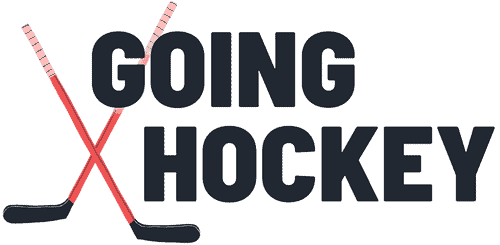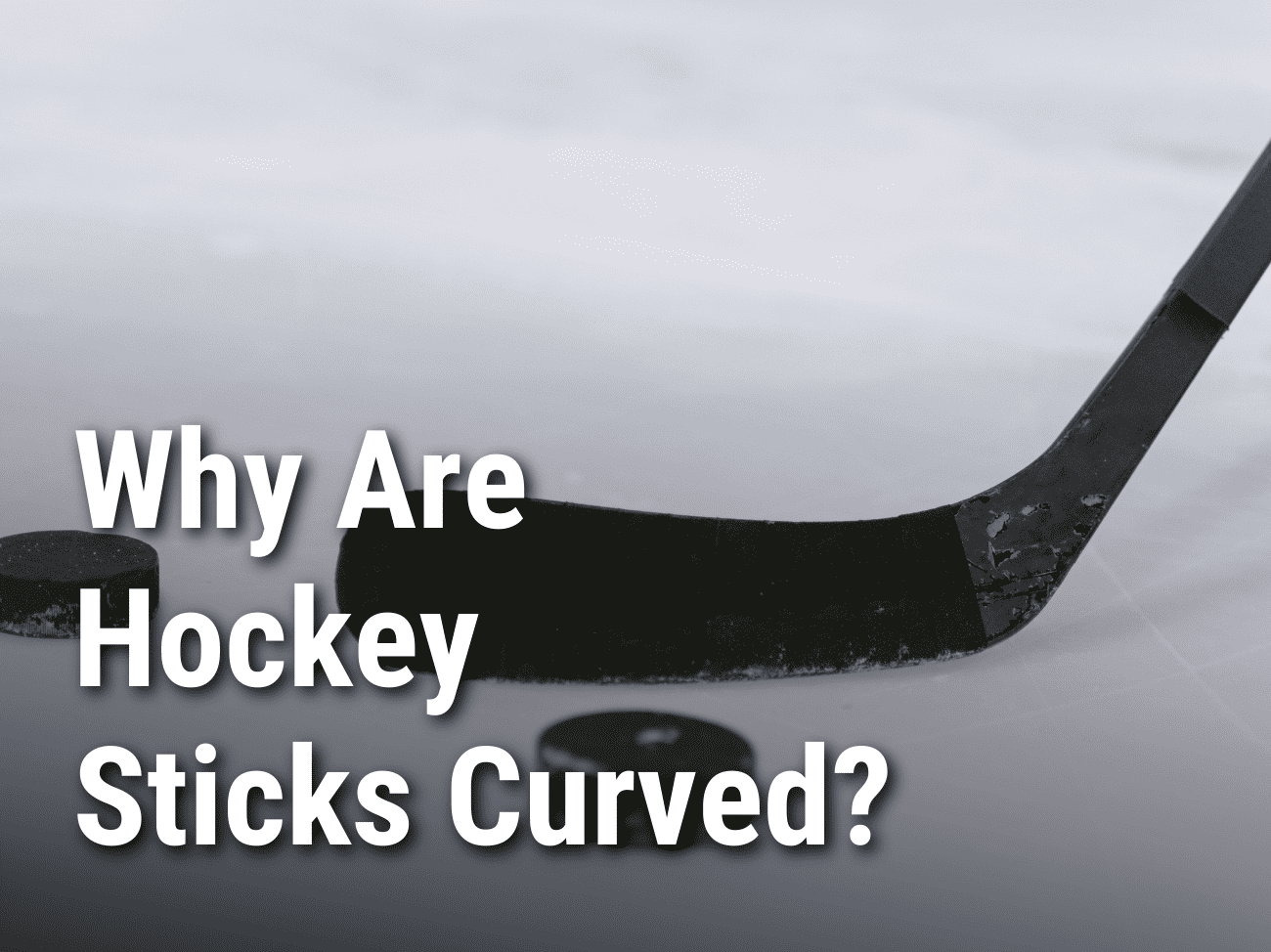Hockey is a unique sport. To many outsiders, its traditions, culture, and customs may seem quirky or strange. One such, seemingly-strange custom is the curved hockey stick.
Why are hockey sticks curved?
Hockey sticks are curved to provide players with maximum puck control and shot power.
What is the curved end of the stick called in hockey?
The curved end of a hockey stick is called the “blade.”
Why Are Hockey Sticks Curved?
Hockey stick blades are curved to provide a player’s forehand with maximum puck control and shot power.
A curved blade is ergonomically complimentary to the curved, sweeping motion that a hockey player makes when shooting or passing the puck on their forehand.

The curved blade enables the player to keep the puck in contact with the blade for a longer duration of time when shooting or passing, increasing the momentum of the pass or shot.
The curved blade also has the added benefit of allowing the player to handle the puck more comfortably and effectively by acting as a kind of “cradle” for the puck.
Who Invented the First Curved Hockey Stick?
The invention of the first curved hockey stick is a subject of some debate and lacks a definitive answer.
While there is no single credited individual for the invention, it is believed that the curved stick gradually evolved over time through the experimentation and innovation of various players and equipment manufacturers.
In the early years of ice hockey, the sticks used were typically straight and made of wood. As the sport advanced and players sought ways to improve their skills, some began to experiment with bending the blades of their sticks to achieve specific effects on the puck. This bending process was often done manually, using heat or steam to soften the wood and then applying pressure to create a curve.

Although it is challenging to attribute the first curved stick to a specific person, certain players from the mid-20th century are often mentioned for their contributions to stick curvature. One notable figure is Bobby Hull, a legendary forward who played in the National Hockey League (NHL) during the 1950s and 1960s.
Bobby Hull was known for his powerful shot, and he popularized the use of a heavily curved stick, which became known as the “banana blade.” His success with this curved stick prompted many players to follow suit and experiment with their own stick curves.
Over time, advancements in stick manufacturing techniques and materials allowed for more precise and consistent curvature. Today, hockey sticks are carefully engineered with specific curves and flex patterns, using advanced materials such as carbon fiber composites to enhance performance.
What Is the Maximum Curve on a Hockey Stick?
The “maximum” curve on a hockey stick depends on what league you’re playing.
In the NHL the maximum curve on a hockey stick blade is three-quarters of an inch (3/4 inch). The curve of the stick is measured by a special tool, designed for measuring stick curvature.

Essentially, the stick curve is measured by drawing a straight line from the heel of the blade to the toe of the blade. Then, measure the point of maximum distance between that straight line and the blade.
It is rare that NHL players get busted for illegal curves. But it has happened before, most notably in the 1993 Stanley Cup finals.
In the 1993 Stanley Cup finals, LA Kings defenseman Marty McSorley was penalized for using an illegal curve, which ended up landing him in the penalty box.
What Is the Best Curve for a Hockey Stick?
There is no real “best curve for a hockey stick” because the “best curve” largely depends on your preferences. That being said, there are better or worse curves depending on what you are hoping to achieve with a curve.
Click here to check out CCM’s chart for different hockey stick curves.
What Hockey Stick Blade Curve Is Best for Wrist Shots?
The best sticks for wrist shots are generally sticks with “open” blade faces. This just means that the end of the stick blade tilts more upwards than normal.
An open blade face provides easy lift on pucks, helping players pick corners easier.
Some notable “open” curves are:
- Ovechkin Curve
- Draisaitl Curve
What Is a Good Hockey Stick Curve for Hanging on to the Puck?
The best curve for hanging onto the puck is any curve that is large and has a circular even, curve to it. You want the curve to act like as much of a “cradle” as possible.
You should stay away from straighter curves as well as curves that have extremely “open” blade faces. Instead, you should opt for closed blade faces with lots of curve.
An example of a good curve for hanging on to the puck:
- Kane Curve

What Is the Best Hockey Stick Curve for Danglers
The best hockey stick curve for danglers would likely be something with a “toe curve.”
A “toe curve” means that a majority of the curve occurs at the toe end of the blade. This configuration allows a player to stickhandle easily with the straighter, heel of the blade, while also allowing them to perform toe drags, “Svechnikovs”, and other advanced moves.
A good curve for a dangler would be:
- Giroux Curve
How to Find the Best Hockey Stick Curve for Me?
The best way to find the right hockey stick curve for you is to test them out.
Hockey stores often have shooting areas where you can try out used hockey sticks. There you can test out a few different curves to see which one is right for you.

Alternatively, if your friend or teammate has a curve you’re thinking about using, you can also ask to borrow their stick for practice or just to shoot around with it for a bit.
Ultimately though, if you practice enough, you can make it work with whatever stick curve you have.


Leave a Reply